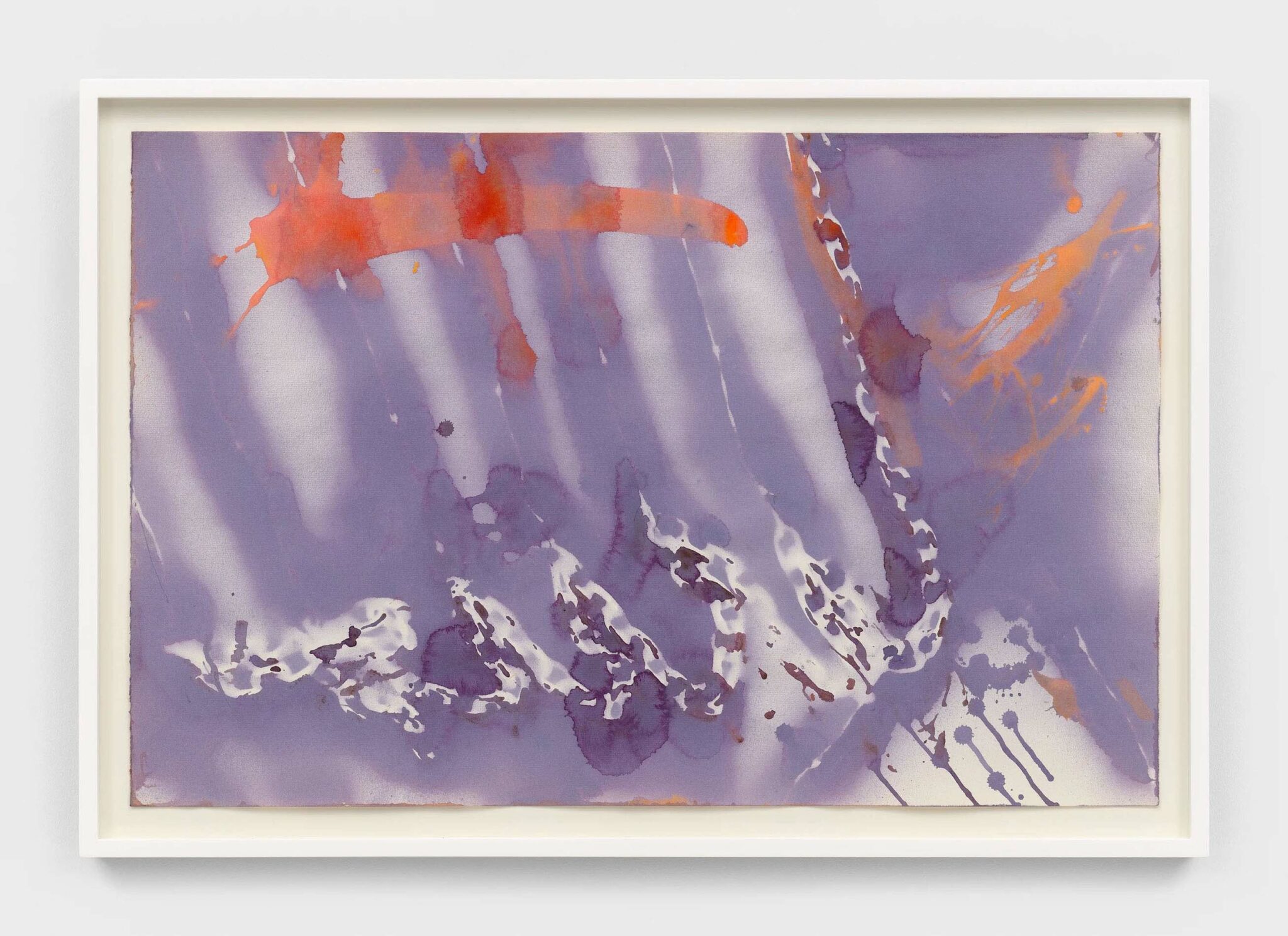Melvin Edwards’s circa 1974 watercolors were deeply informed by the work of his friends, fellow Black abstractionists like Sam Gilliam and Frank Bowling. Like Gilliam and Bowling, he questioned established approaches to composition and form. Isolating discarded lengths of barbed wire and chain, he flicked, sprayed, and brushed watercolor over them. The resulting drawings with their luminous grounds and gestural drips recall both the hazy, layered washes of pigment in Gilliam’s Beveled-Edge Paintings (1967–73) and the wild rivulets of acrylic in Bowling’s Poured Paintings (1973–78). Foregrounding unfettered chromatic expression, Edwards’s technique results in compositions that are simultaneously joyous and foreboding; the barbaric nature of their imagery—tools of subjugation and incarceration—undercut by their vivid color.
A retrospective of Edwards’s work was presented at Nasher Sculpture Center, Dallas, in 2015. Edwards’s sculptures are currently on view at deCordova Sculpture Park and Museum, Lincoln, MA and Dia Beacon, NY. His work has been the subject of recent one-person exhibitions at City Hall Park, Public Art Fund, New York; Ogden Museum of Southern Art, New Orleans; Baltimore Museum of Art; and Museu de Arte de São Paulo, among others. Edwards’s work is represented in the collections of the Brooklyn Museum; Buffalo AKG Art Museum; The Cleveland Museum of Art; Dia Art Foundation; Los Angeles County Museum of Art; The Metropolitan Museum of Art, New York; The Museum of Fine Arts, Houston; The Museum of Modern Art, New York; National Gallery of Art, Washington, DC; Pennsylvania Academy of the Fine Arts, Philadelphia; San Francisco Museum of Modern Art; The Studio Museum in Harlem, New York; and Whitney Museum of American Art, New York, among others.
[excerpted from Alexander Gray Associates website: www.alexandergray.com]

